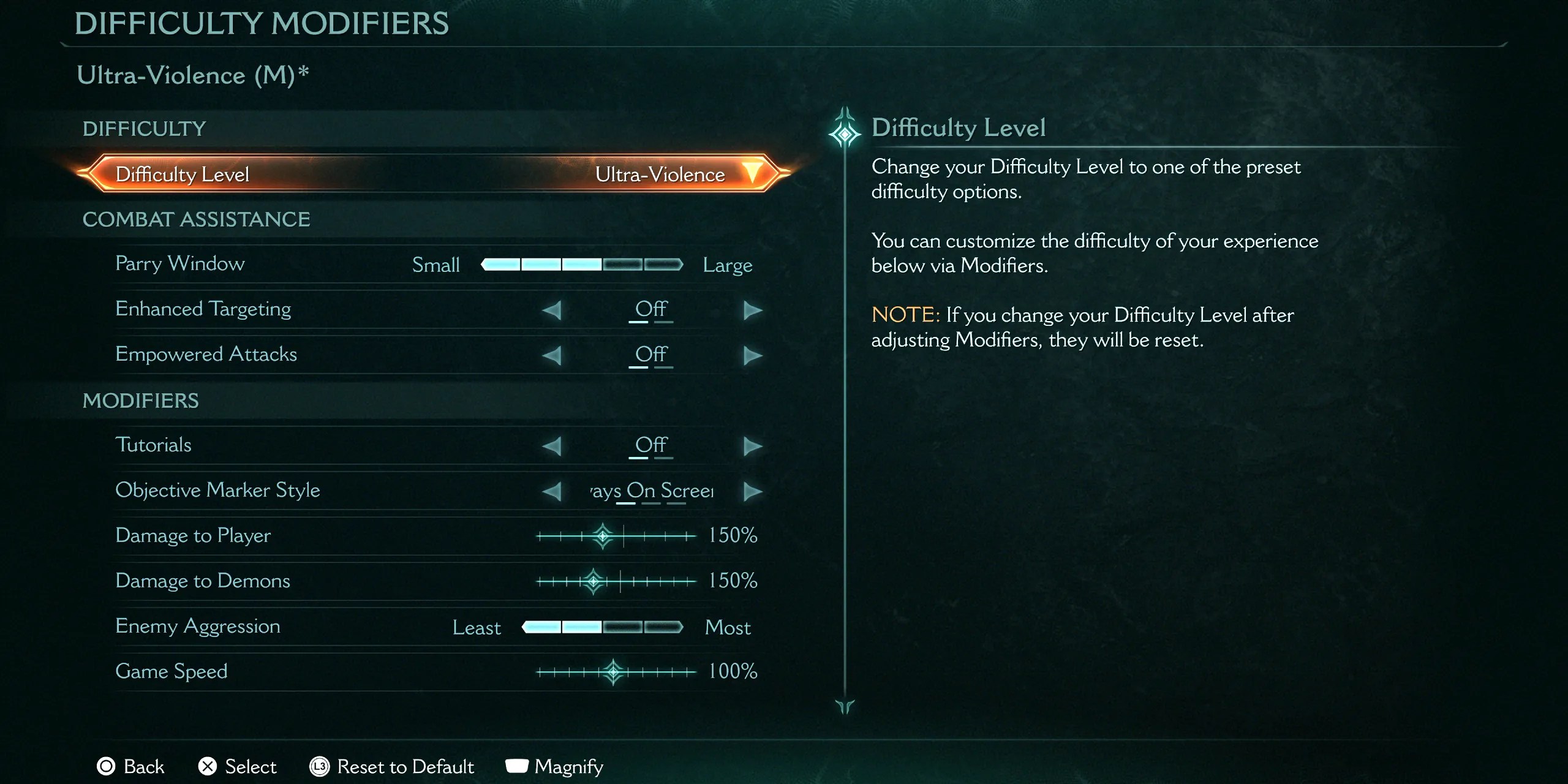Quick Links
DOOMgames have always beendesigned to be difficult, with players encouraged to learn their mechanics so that they can fully master the challenge. In recent years, though, much more of an effort has been made to make the games accessible to casual players, and this is once again the case withDOOM: The Dark Ages.
Through its various accessibility options and difficulty settings,DOOM: The Dark Agescan cater to just about every type of player. Whether you’re looking for a more laid-back experience or a balls-to-the-wall assault on demonkind, the game’s got you covered and offers plenty of headroom for players to improve.

All DOOM: The Dark Ages Difficulty Settings and Differences
There are six difficulty settings inDOOM: The Dark Ages, all of which are available right from the get-go. Understanding the differences between them can make choosing the right difficulty setting a whole lot easier, so players are encouraged to check out the following table before starting their playthrough. That said, it is possible to change the difficulty setting at any time, so they needn’t worry too much about the decision.
Differences
Aspiring Slayer
The Aspiring Slayer difficulty setting has the largest possible Parry Window. Enhanced Targeting and Empowered Attacks are enabled, which makes aiming much more forgiving and allows players to disrupt enemy attacks a lot more easily. Enemies will be less aggressive, their attacks will only deal 50% damage, and they’ll remain dazed for 50% longer. Players will also get a lot more health, armor, and ammo when picking up resources.
Hurt Me Plenty
Hurt Me Plenty has a slightly smaller Parry Window than Aspiring Slayer and doesn’t have Enhanced Targeting or Empowered Attacks enabled by default. Enemies are a bit more aggressive and will deal twice as much damage, and will also recover from being dazed a lot faster. Effectively, everything here is at the default setting.
Ultra-Violence
When playing onDOOM: The Dark Ages' Ultra-Violence difficulty setting, enemies are more aggressive and deal 200% damage. The Parry Window is a little smaller than it is on Hurt Me Plenty, and Daze Duration drops to 75%.
Nightmare
On Nightmare, enemy aggression is set to maximum, and they’ll deal 250% damage to players. Resource values are also a little lower than they are on Ultra-Violence.
Pandemonium
Pandemonium is the same as Nightmare, only running out of Life Sigils will result in the player’s run coming to an end.
Ultra-Nightmare
Like Pandemonium, Ultra-Nightmare uses the same difficulty settings as Nightmare, with the main difference being that the player’s run will end if they die even once.
Which DOOM: The Dark Ages Difficulty Setting Should You Choose?
There are noDOOM: The Dark AgesTrophies/Achievementstied to difficulty, so players can focus on choosing the setting that best matches their ability and the level of challenge that they want. Those new to the franchise or genre should choose Aspiring Slayer, as too should anyone who isn’t looking for much of a challenge. Hurt Me Plenty and Ultra-Violence will be the best options for most casual players, while series veterans and FPS experts hoping to put their skills to the test should go with Nightmare.
The Pandemonium and Ultra-Nightmare difficulty settings serve as challenge runs, with the former being the easier of the two. It’s recommended that playerscomplete the game on one of the other four difficulty settingsbefore attempting to take on a Pandemonium or Ultra-Nightmare run, although those looking for the ultimate challenge may want to dive straight in.

DOOM: The Dark Ages Difficulty Modifiers
If players are unable to find a difficulty setting that matches their skill level or their desired level of challenge, they’ll be able to further tweak the experience via the game’s Difficulty Modifiers menu. Here, they can do things like alter the amount of damage they deal and receive, increase or decrease the Parry Window, and speed up or slow down the game or enemy projectiles. There’s a wide variety of options available, making it easy for players to get things exactly how they like them.
Difficulty modifiers can be used on Pandemonium and Ultra-Nightmare runs, although players won’t be able to switch back to a regular run after starting one. Similarly, they won’t be able to start on one of the game’s four main settings and then switch to Pandemonium or Ultra-Nightmare later on.





